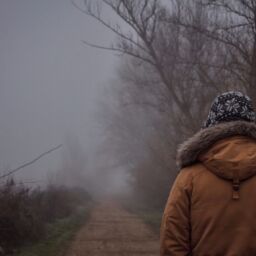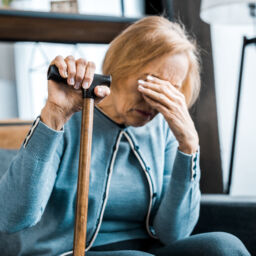
School Shootings: How To Start Solving The Problem
by- Amanda Hildreth
Many of us can’t comprehend how anyone could shoot a child or youth, no matter their age, relationship, or other factors. Survivors of school shootings often suffer from traumatic stress symptoms, anxiety, and depression.
One of the most disturbing effects of a school shooting is the feeling of ongoing danger, and the school’s climate and sense of community are forever altered.
What Makes School Shootings Different From Other Gun Violence?
School shootings impact children differently than other shootings for a variety of reasons. Due to the connection between teachers and students who have been victims of school shootings, and the loss of trust in the school and its ability to protect them, children exposed to school shootings may suffer more than others.
School shootings have also received increased media coverage, putting many students on edge. Exposure to gun violence in a school setting can also be even more traumatic if it causes intense fear (Lowe and Galea, 2017).
School shootings are also likely to cause a significantly greater disruption to student learning due to potential teacher turnover, classroom resources, and teaching quality.
Peer effects in schools are essential ; for example, education and well-being are influenced by what other peers do in a class setting, and the adverse impact of a student’s trauma after a school shooting can be amplified due to disruptions from other exposed students (Carrell et al., 2018).
Child-Related Statistics About School Shootings And Gun Violence
Here are some key statistics about gun violence and school shootings related to children.
- Every day 12 children die from gun violence in the United States. Another 32 children are shot and injured daily (Lee, Douglas, & Hemenway, 2022).
- Guns are the leading cause of death among children and teens, with 1 in10 deaths being due to gun violence by someone aged 19 or younger (CDC, 2021).
- Since Columbine in 1999, over 338,000 students have experienced gun violence at schools across the United States (Cox, Rich, Chong, Trevor, Muyskens, & Ulmanu, 2023).
- More school shootings occurred in 2022 than any other year since Columbine.
- In 2022, 34 students and staff died, while over 43,000 children experienced gunfire at school (Cox, Rich, Chong, Trevor, Muyskens, & Ulmanu, 2023).
The Long-Term Effects Of School Shootings
Students that experience a school shooting suffer trauma that can create life-long consequences, including adverse health and educational impacts.
- Students exposed to a school shooting can often lead to poor e educational outcomes. Recent studies found that test scores in Math and English fell dramatically at schools like Sandy Hook and other schools within the district following the attack (Levine & McKnight, 2021).
- School shootings also cause increased absenteeism. After Sandy Hook, chronic absenteeism rose by 3 percent.
- Studies also suggest that unpleasant health consequences are a part of school shootings. Antidepressant prescriptions for young adults near school shootings rise after an occurrence (Levine & McKnight, 2021).
- There is also evidence of a long-term increase in mortality rates, including suicide, and accidental deaths among boys who have been a part of school shootings.
- School shootings also create high financial costs for school districts. After a shooting, schools have to increase the money spent on support services and overall security. After a shooting, there is typically an increase of 3.5 percent in spending on support services, and the overall per-student cost increases by 10 percent (Levine & McKnight, 2021).
Why Violence Is Occurring In The United States
As with most types of behavior, there is a combination of opportunity and inclination. Inclination, in general, has contributions from both nature and nurture. Factors related to nurture may include a decrease in adult supervision and the repetition of violence in movies, cartoons, and video games. These conditions create support for and model violent behavior. We have made things more challenging for children and given them less help than before.
“You have to look at it as a psychologization of youth. Who are their parents? Having access to weapons or having access to television and media are both two dynamic issues to deal with” (Gibson, 2023).
“You can see by the way video games are designed, it does teach children how to plan their attacks, how to aim, how to look at the recoil, but they will definitely find themselves in a set of circumstances where they get to test out, does it really feel like the game?”(Gibson, 2023).
Nature also contributes to a propensity for violence in many ways. One study showed that violent acts were reported in 3.7% of people tested (Swanson, Holzer, Ganju, et al., 2006). The rate of self-reported violent behavior was 2% for those with no psychiatric diagnosis and increased five-fold with schizophrenia.
Substance abuse by itself or any two psychiatric disorders combined was associated with a 10-fold increase. Most violent individuals didn’t have a mental health diagnosis, and the majority of those with mental health issues weren’t violent. Although most mentally ill individuals aren’t violent, 20% of those in the study with a mental illness or substance use issue included nearly half the violent individuals. (Torrey, 2006).
How mental illness affects violence differs for each illness. For example, the combination of types of delusions or hallucinations and a lack of insight are associated with the violent behavior of schizophrenia (Junginger, J., 1995).
Medications do reduce the symptoms and potential violent acts. However, when medications are not taken as prescribed and combined with substance use, the risk of violent acts increases (Swartz, Swanson, Hiday, Borum, Wagner, and Burns, 1998).
Identifying and consistently treating mental illnesses that increase the risk of violent acts is just one part of violence prevention.
Understanding Warning Signs Of School Shootings
Before we can begin to know how to stop school shootings from happening, there are some key factors to know.
- In 4 of 5 school shootings, at least one person knew the shooter’s plan and didn’t report it (US Department of Education And Secret Service, 2004).
“All an active shooter is a roving ambush. They catch you by surprise in an area that they have already walked and already surveyed. They know where the cover is, they know where the concealment is. They know what angels of attack or coordinated fire they need to have. They know where to shoot and why to shoot there” (Gibson, 2023).
- 93% of school shooters plan their attacks (US Department of Education And Secret Service, 2004). It’s crucial to see the signs and get help.
- Almost all school shooters shared concerning messages or images. More than 75% raised concern from others before a shooting. In the most documented school shooting cases, bystanders saw the warning signs and never raised concerns to others (US Secret Service, 2020).
Now that we understand the statistics, here are some signs to look for in potential school shooters:
- Withdrawing from friends or family
- Social isolation
- Bullying, especially if it is towards a certain race, religion, gender, or sexual orientation
- Being irritable, becoming easily angered
- Showing thoughts of harming themselves or someone else
- Bragging about access to guns
- Making direct threats
How To Stop School Shootings
There are some measures we can take to stop school shootings, including:
- Situational Awareness
- Addressing Gun Culture
- Better Training For Police
“So, what do we need to do to combat this? First, a viscerally connective education, a cultural shift in gun ownership, that culture needs to change as well as the general environment around our children. We need better training for our police officers and our school security” (Gibson, 2023).
What Is Situational Awareness?
Situational awareness is an essential practice to recognize what is normal and what is abnormal given any situation signaling potential danger. When you become more aware, you can assess, identify, report, and avoid threats (Collins, 2022).
Situational awareness is all about allowing your sixth sense to play a role in your everyday life by:
- Being mindful of your environment and surroundings
- Being mindful of those around you, and anything that could be out of place.
- Assessing actions and activities that could affect you.
“If you are aware of your surroundings and the impact of your surroundings on you, often times you are more careful not only about hurting others but hurting yourself” (Gibson, 2023).
“Once people are situationally aware they know what their options are when it comes to mass shootings” (Gibson, 2023).
The Value Of Situational Awareness In Schools
Situational awareness can be a crucial line of defense against any threat, including school shootings, student self-harm, and more. Even having multiple security officers at the school is no guarantee of protection because they cannot be everywhere.
Combined with other safety measures, situational awareness can provide an added layer of protection by placing everyone in a security mindset, including administrators, custodial staff, teachers, students, and parents (Collins, 2022).
An aware campus where every student, parent, staff, and teacher is alert can equal thousands of eyes and ears. Ensuring that every person in the school community understands situational awareness and what to do when faced with a threat makes a situation much easier to handle.
“Remember, the four major principles of an ambush, the very first one is surprise. Surprise is probably the one thing that gets more people killed than anything else. In our society, we aren’t taught to duck, we are taught to look up and stare and pick up our cameras and start filming.” (Gibson, 2023).
Addressing Gun Culture
“We have numbed our society into believing that mass shootings are a traditional understanding of how guns are used in our society. Kids do not possess the level of discernment to interpret the way guns work in our society” (Gibson, 2023).
Studies in several disciplines have explained how complex social, legal, and historical factors have created a culture that favors individual rights over gun control.
Changing gun culture is necessary to change gun violence in the United States. Changing our gun culture will require the creation of a new narrative that makes gun violence a public health issue and focuses on the consequences of gun violence on the population’s health (Abdalla, Keyes, Galea, 2020).
We can take a few key steps to change the gun culture (Abdalla, Keyes, Galea, 2020):
1. Taking a multidisciplinary approach to gun violence can help us identify the actions needed to push against our current gun culture. Taking a multidisciplinary approach suggests that addressing gun violence will require addressing the root cause of gun culture.
2. Public health has little to no choice but to engage with the media to change the discussion of gun violence as a public health emergency rather than a political debate. This framing can be done by collaborating with the media to prevent gun violence research to a broader audience. Changing culture will require more deliberate and sustained campaigns to focus on the human cost of gun violence.
3. Progress will require us to collaborate with allies with similar goals to advance the thought of gun violence as a public health emergency. We can align with institutions that shape the culture in the United States, including churches and movie production companies.
Better Police Training
“Police have to be extra careful when they get there, going in guns blazing is going to get you or many innocent other people killed. So, you have to have a certain kind of way that you attack these shooters, and it has to be more precise” (Gibson, 2023).
All police responding to a school shooting should be taught to address and eliminate the threat immediately .
Before Columbine, police believed that a school shooting was a job for SWAT. Police would contain the situation and then contact the SWAT team, which was a mistake. Police now focus on getting resources into the building to stop the threat promptly. (Police Executive Research Forum, 2014).
It is also crucial for different agencies to receive similar training, including EMS, fire departments, and anyone else who responds to active shooter situations. It is crucial to update tactics as situations change consistently. Everyone must be trained in the same ways that effectively manage active shooter situations (Police Executive Research Forum, 2014).
We at AbuseRefugeOrg (ARO) are here to support you in your personal healing journey to complete wellbeing. We bring education and awarness to 21 different types of abuse, including Psychologic Abuse, Spousal Abuse, Physical Abuse, Sexual Abuse, Narcissistic Abuse, Financial Abuse, Self Abuse, Workplace Abuse, Isolation Abuse, Child Abuse, Bullying, Cyberbullying, Elderly Abuse, Religious Abuse, Medical Abuse, Food Abuse, Authority Abuse, Educational Abuse, Child Sexual Exploitation, Sex Trafficking, and Political Abuse and help others heal and find peace. Please support our efforts by going to GoARO.org to learn how you can impact the Abuse Care Community and provide life-saving financial assistance with a donation.
References
Lowe, Sarah R., and Sandro Galea, “The mental health consequences of mass shootings,” Trauma, Violence, & Abuse, 2017, 18 (1), 62–82.
Carrell, Scott E., Mark Hoekstra, and Elira Kuka, “The long-run effects of disruptive peers,” American Economic Review, 2018, 108 (11), 3377–3415.
Lee, L. K., Douglas, K., & Hemenway, D. (2022, April 21). Crossing lines — a change in the leading cause of death among U.S children. The New England Journal Of Medicine. ;
CDC. (2021, February). A Public Health Crisis Decades In The Making: A Review Of 2019 CDC Gun Mortality Data.
Cox, J. W., Rich, S., Chong, L., Trevor, L., Muyskens, J., & Ulmanu, M. (2023, April 3). More than 352,000 students have experienced gun violence at school since Columbine. The Washington Post. ;
Levine, P. B., & McKnight, R. (2021, January 4). Exposure to a school shooting and subsequent well-being. NBER. ;
Swanson, J. W., Holzer, C. E., Ganju, V. K., & Jono, R. T. (2006, April 1). Violence and Psychiatric Disorder in the Community: Evidence From the Epidemiologic Catchment Area Surveys. Psychiatry Online. https://ps.psychiatryonline.org/doi/abs/10.1176/ps.41.7.761
Torrey, E. F. (2006, April 1). Violence and Severe Mental Illness: The Effects of Substance Abuse and Nonadherence to Medication. Psychiatry Online. https://ps.psychiatryonline.org/doi/abs/10.1176/ps.45.7.653
Junginger, J. (1995). Command hallucinations and the prediction of dangerousness. Psychiatric Services, 46(9), 911–914. https://doi.org/10.1176/ps.46.9.911
Swartz, M. S., Swanson, J. W., Viday, V. A., Borum, R., Wagner, H. R., & Burns, B. J. (1998, February 1). Violence and Severe Mental Illness: The Effects of Substance Abuse and Nonadherence to Medication. The American Journal Of Psychiatry. https://ajp.psychiatryonline.org/doi/full/10.1176/ajp.155.2.226
UNITED STATES SECRET SERVICE AND UNITED STATES DEPARTMENT OF EDUCATION. (2004, June). THE FINAL REPORT AND FINDINGS OF THE SAFE SCHOOL INITIATIVE: IMPLICATIONS FOR THE PREVENTION OF SCHOOL ATTACKS IN THE UNITED STATES. ;
United States Secret Service. (2020, August). Mass Attacks In Public Spaces. United States Secret Service National Threat Assessment Center. ;
Collins, R. (2022, November 7). Situational Awareness: Taking ownership of School Safety. PTA One Voice Blog. ;
Abdalla, S. M., Keyes, K. M., & Galea, S. (2020, October 27). A public health approach to tackling the role of culture in shaping the gun violence epidemic in the United States. Public health reports (Washington, D.C. : 1974). ;
The police response to active shooter incidents. Police Executive Research Forum. (2014, March). ;
Michael Gibson, Former US Army Special Forces Green Beret & Creator of Norm Therapy. NormTherapy.com.
















